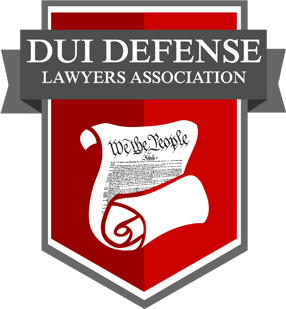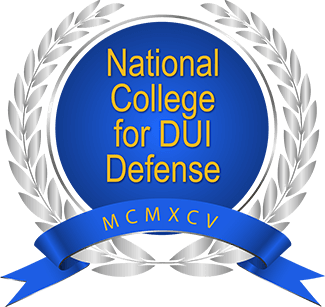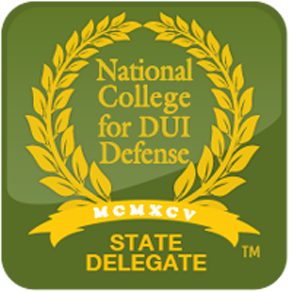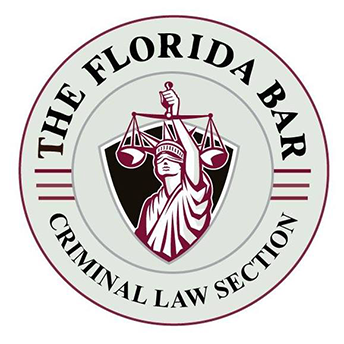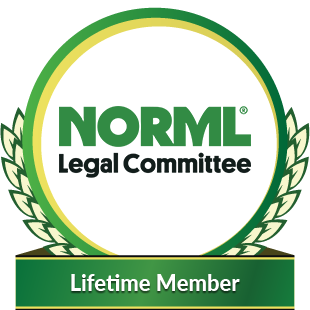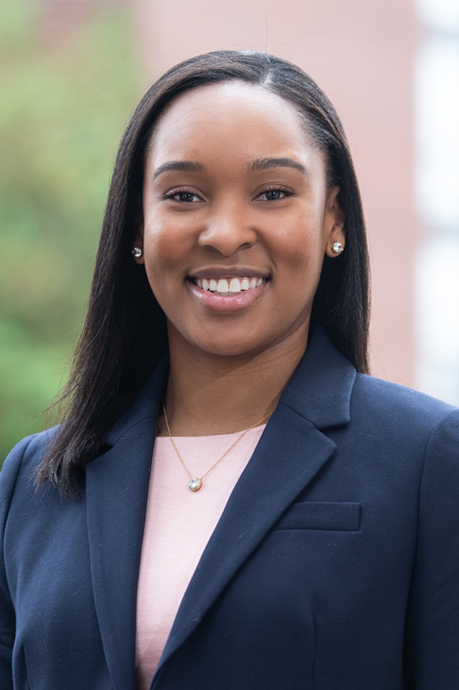Leaving the Scene of a Crash
Florida law makes it clear that you are not allowed to leave the scene of a crash until you have complied with all of your statutory obligations to provide information or help anyone injured in the crash.
After a crash, stop your vehicle at the scene of the accident and remain there until you have provided all of your information to the other person involved in the crash or the law enforcement officer who prepares the crash report. If anyone is injured in the crash, immediately call 911.
If you made the mistake of leaving the scene, you need a criminal defense attorney who can help you deal with the consequences. We represent clients at every stage of the criminal investigation.
Although crimes for “hit and run” are common in Tampa, FL, the punishments can be extremely harsh. The penalties depend on the way the crime is charged and the damages caused by the crash.
If the crash only involves property damage, then the crime is charged as a second-degree misdemeanor for:
- damage to unattended property (such as a fence or mailbox); or
- damage to attended property (such as another occupied vehicle on the roadway).
The penalties for the second degree misdemeanor form of leaving the scene is up to sixty (60) days in jail or six (6) months probation and a $500 fine.
Some crimes for leaving the scene of a crash can be charged as a felony. The penalties for the felony versions of leaving the scene of a crash are determined by the type of injury caused by the crash, including:
- non-serious bodily injury under 316.027(2)(a), which is a third-degree felony punishable by up to five (5) years in prison and a $5,000 fine;
- serious bodily injury under 316.027(2)(b), which is a second-degree felony punishable by up to fifteen (15) years in prison and a $10,000 fine; or
- death under 316.027(2)(c), which is a first-degree felony punishable by up to thirty (30) years in prison and a $10,000 fine.
An issue in some of these cases is whether a crash causing damages actually occurred or whether you knew that a crash causing damages occurred. If there were no damages that resulted from the crash, then it is NOT a crime to leave the scene. J.J. v. State, 842 So.2d 266 (Fla. 2nd DCA 2003).
Attorney for Leaving the Scene of a Crash in Tampa, FL
If you were charged with leaving the scene of a crash (often called “hit and run”), contact an experienced criminal defense attorney at Sammis Law Firm in downtown Tampa, FL. If anyone at the scene can identify you or your vehicle (or your vehicle can be seen on surveillance video at the scene), then a criminal investigation is likely underway.
Although the vast majority of our cases are for misdemeanors, we are also experienced in fighting the most serious charges for felony offenses involving leaving the scene of a crash involving a serious bodily injury or a fatality.
Even if the damage was minor and no one was hurt, law enforcement officers who focus on hit-and-run cases will often come knocking on your door to find out why you left the scene. Anything you say can be used against you and make it more likely that you will be charged with and convicted of that crime.
By hiring a criminal defense attorney right away, you can find the best way to deal with this serious allegation. Let us put our experience to work for you. From dealing with the criminal investigation to dealing with your insurance company, we can help you during each step.
Call 813-250-0500.
The Requirements of Florida Statute Section 316.062
Florida Statute Section 316.062 requires the driver to stop at the scene of the crash (or as close as possible) to give the following information:
- name;
- address; and
- registration number of the vehicle.
Upon request, the driver must exhibit his or her license to:
- the driver or occupant attending any vehicle;
- any person attending property damaged in a crash; or
- any police officer at the scene.
The best way to do this is to have a copy of these documents in your glove box. After the crash, just hand out these copies to anyone involved in the crash or the investigating officer before you leave the scene.
Sometimes, the driver leaves the scene because they are concerned about being charged with another crime, including:
- driving under the influence (DUI) with property damage;
- driving while license suspended or revoked;
- fleeing in an attempt to elude;
- reckless driving; or
- speed racing.
Penalties and Punishments for Leaving the Scene of a Crash
What are the penalties for leaving the scene of an accident in Florida? The penalties depend on whether anyone suffered a non-serious injury, serious bodily injury, or death.
Leaving the Scene of a Crash involving Bodily Injury – 316.027(2)(a)-(b)
The crime can be charged as a third-degree felony if non-serious bodily injury. The crime can be charged as a second-degree felony is serious bodily injury occurred as a result of the crash.
Florida Statute 316.027 defines the term “serious bodily injury” to mean an injury to a person, including the driver, which consists of a physical condition that creates a substantial risk of death, serious personal disfigurement, or protracted loss or impairment of the function of a bodily member or organ.
The distinction between non-serious and serious injury often falls within a grey area. A criminal defense attorney can help you present any defenses to show that no bodily injury occurred or that the bodily injury was non-serious instead of serious.
Crimes charged under Section 316.027 also require proof that:
- the defendant was a driver of a vehicle;
- the vehicle was involved in a crash;
- the crash occurred on public or private property;
- the driver willfully failed to immediately stop the vehicle at the scene of the crash, or as close thereto as possible; and
- the driver willfully failed to remain at the scene of the crash until he or she has fulfilled the requirements of s. 316.062.
Leaving the Scene of a Crash Involving Death – 316.027(2)(c)
The crime of “leaving the scene of a crash with death” is charged under section 316.027(2)(c). The statutory maximum for this offense is thirty years in prison. The crime requires a mandatory minimum term of imprisonment of 4 years although that can be waived by the court if the driver was not under the influence of alcohol or controlled substances at the time of the crash.
In those cases, Florida law allows the court to depart from a mandatory minimum term for a violation of s. 316.027(2)(c), F.S., when the driver involved in a fatal crash fails to stop and remain at the scene of a crash but the court finds “that a factor, consideration or circumstance clearly demonstrates that imposing a mandatory minimum term of imprisonment would constitute or result in an injustice.” Section 316.027(2)(g), F.S.
On the other hand, a person who willfully commits such a violation while driving under the influence (DUI) as set forth in s. 316.193(1), shall be sentenced to a mandatory minimum term of imprisonment of four (4) years.
If the person is arrested for leaving the scene of a crash involving injury, serious bodily injury or death, has previously been convicted of any felony version of leaving the scene, then the person will be held in custody until brought before the court for admittance to bail in accordance with chapter 903.
What is a Vulnerable Road User?
The term “vulnerable road user” is defined to include:
- A pedestrian, including any person actually engaged in work upon a highway, or in work upon utility facilities along a highway, or engaged in the provision of emergency services within the right-of-way;
- A person operating a bicycle, motorcycle, scooter, or moped lawfully on the roadway;
- A person riding an animal; or
- A person lawfully operating on a public right-of-way, crosswalk, or shoulder of the roadway:
- A farm tractor or similar vehicle designed primarily for farm use;
- A skateboard, roller skates, or in-line skates;
- A horse-drawn carriage;
- An electric personal assistive mobility device; or
- A wheelchair.
Restitution in Felony Leaving the Scene Cases
Generally, there is no restitution for leaving the scene of the accident. State v. Ochoa, 596 So.2d 515 (Fla. 2nd DCA 1992). The law acknowledges that the damages would have occurred with or without the offense of leaving the scene. Williams v. State, 520 So.2d 276 (Fla. 1988).
For this reason, the court cannot order restitution for leaving the scene of an accident unless there can be shown a causal connection between the offense and damages. Longshore v. State, 655 So.2d 1139 (Fla. 5th DCA 1995).
But when the causal connection can be shown in a felony case, the court must order the driver to make restitution to the victim for any damage or loss unless the court finds clear and compelling reasons not to order the restitution. Restitution may be monetary or non-monetary restitution.
The court shall make the payment of restitution a condition of probation in accordance with s. 948.03. An order requiring the defendant to make restitution to a victim does not remove or diminish the requirement that the court order payment to the Crimes Compensation Trust Fund under chapter 960.
Payment of an award by the Crimes Compensation Trust Fund creates an order of restitution to the Crimes Compensation Trust Fund unless specifically waived in accordance with s. 775.089(1)(b).
Driver’s License Revocation for Felony Leaving the Scene Crimes
In these cases, the court or the DHSMV will revoke the driver’s license for at least 3 years as provided in s. 322.28(4). Under 322.28(4), after a conviction for:
- a first offense of s. 316.193(3)(c)2., the court shall revoke the driver license of the person convicted for a minimum period of three (3) years;
- a second offense of s. 316.193(3)(c)2., involving serious bodily injury, the court shall revoke the driver’s license for the period applicable as provided in paragraph (2)(a) or paragraph (2)(d); or
- a first conviction for a violation of s. 316.027(2)(a), (b), or (c) involving injury, serious bodily injury, or death, results in the court revoking the driver’s license of the person convicted for a minimum period of 3 years.
If the period of revocation was not specified by the court at the time of imposing sentence or within 30 days thereafter, the department shall revoke the driver’s license for the minimum period applicable under paragraph (a) or paragraph (b) or, for a subsequent conviction, for the minimum period applicable under paragraph (2)(a) or paragraph (2)(d).
How to Get Your Driving Privileges Reinstated
In these cases, after a driver’s license revocation, the defendant must show proof to the DHSMV of completion of a victim’s impact panel session in a judicial circuit if such a panel exists, or if such a panel does not exist, a department-approved driver improvement course relating to the rights of vulnerable road users relative to vehicles on the roadway as provided in s. 322.0261(2).
The department may reinstate an offender’s driving privilege after he or she satisfies the 3-year revocation period as provided in s. 322.28(4) and successfully completes either a victim’s impact panel session or a department-approved driver improvement course relating to the rights of vulnerable road users relative to vehicles on the roadway as provided in s. 322.0261(2).
For purposes of this paragraph, an offender’s driving privilege may be reinstated only after the department verifies that the offender participated in and successfully completed a victim’s impact panel session or a department-approved driver improvement course.
For purposes of sentencing under chapter 921 and determining incentive gain-time eligibility under chapter 944, an offense listed in this subsection is ranked one level above the ranking specified in s. 921.0022 or s. 921.0023 for the offense committed if the victim of the offense was a vulnerable road user.
The defendant may move to depart from the mandatory minimum term of imprisonment prescribed in paragraph (c) unless the violation was committed while the defendant was driving under the influence. The state may object to this departure.
The court may grant the motion only if it finds that a factor, consideration, or circumstance clearly demonstrates that imposing a mandatory minimum term of imprisonment would constitute or result in an injustice. The court shall state in open court the basis for granting the motion.
Recent Statistics on Leaving the Scene of a Crash in Florida
According to the Florida Department of Highway Safety and Motor Vehicles (DHSMV), Florida had more than 98,000 hit-and-run cases in 2017. The Florida Highway Patrol worked almost 24,000 of those crashes.
In 2017, FHP estimates that hit-and-run crashes remained steady at around 25 percent of all crashes. In prior years, the number of hit-and-run crashes reported included:
- 99,004 in 2016;
- 94,456 in 2015;
- 85,241 in 2014; and
- 78,661 in 2013.
The most common type of charge for hit and run reported is leaving the scene of an accident resulting in property damage of more than $50, a second-degree misdemeanor. Florida is among the top three states with the highest per capita rates of fatal hit-and-run crashes, according to a study AAA Foundation for Traffic Safety in 2018.
Additional Resources
Stay at the Scene – Visit the Florida Department of Highway Safety and Motor Vehicles website to learn more about driving safety and staying at the scene of a traffic crash. Find out how the penalties for hit-and-run drivers changed on July 1, 2014, when the Aaron Cohen Life Protection Act (section 316.027, Florida Statutes) was signed into Florida law. The Aaron Cohen Life Protection Act imposes a mandatory minimum of 4 years for a driver convicted of leaving the scene of a crash resulting in a fatality.
Quick Stats on Crashes in Florida – Use Florida’s integrated report exchange system (FIRES) to find quick stats and crash summaries organized by year, county, or agency. For each county, find the total number of crashes or the number of injury crashes charged for leaving the scene of an accident, traffic fatality crashes, commercial vehicle crashes, property damage crashes, or bicycle crashes.
This article was last updated on Monday, January 29, 2024.
Free Consultation
Submit this form to request a free and confidential consultation with one of our attorneys.
Our Office Locations
Tampa Office:
Sammis Law Firm, P.A.
1005 N. Marion St.
Tampa, FL 33602
(813) 250-0200
New Port Richey Office:
Sammis Law Firm, P.A.
7509 Little Rd.
New Port Richey, FL 34654
(727) 807-6392
Clearwater Office:
Sammis Law Firm, P.A.
14010 Roosevelt Blvd. #701
Clearwater, FL 33762
(727) 210-7004
Our Attorneys

